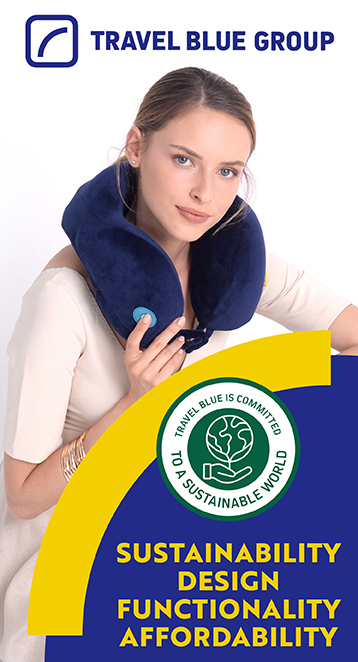SINGAPORE. In a landmark speech to parliament yesterday that should be mandatory listening for politicians all over the world, Transport Minister Ong Ye Kung said that Singapore will negotiate Air Travel Bubbles with countries or regions deemed safe.
Ong was appointed Transport Minister on 27 July after Singapore’s Parliamentary Election earlier that month. He was previously Minister for Education.
That selection will be based on countries or regions with comprehensive public health surveillance systems, and low rates of COVID-19 infection comparable to Singapore’s.
The arrangement, different to the previously announced, heavily limited ‘Green Lane’ routes (applying to selective business and official travel only), will mean that general travellers do not require a controlled itinerary.
“I have described our airport as a lung of Singapore, just as a lung takes in oxygen and vitalizes every part of the human body. The airport connects Singapore with the outside world and energises every sector of our economy.”
[Click on the icon to hear The Straits Times’ report on Minister Ong’s speech or click here to listen to the full speech courtesy of CNA]
Any risks posed by Air Travel Bubbles can be managed by setting a quota on the number of daily travellers and ensuring everyone is tested for COVID-19, Ong said.
“On a selective basis, we can open up our border. Do away with SHN (stay home notice), which is a big deterrent to travel for anybody, and replace SHN with tests. Testing is therefore the key to unlock air travel with COVID-19 around for a while.”
The Minister said that the government is determined to revive the fortunes of Changi Airport Group and Singapore Airlines by lifting border restrictions. The country will bring visitors back but do it in a safe and controlled manner.
Hong Kong routes set to open
With Hong Kong having announced its intention to establish such bubbles with several countries, including Singapore, Ong said that the government had responded positively. “We hope to commence discussions with Hong Kong and other partners soon.”
As reported, Singapore unilaterally opened its borders to visitors from Brunei and New Zealand last month, and more recently to those from Vietnam and Australia, excluding the hard-hit state of Victoria.
Turning the clock back 40 years – we present edited highlights of Ong Ye Kung’s speech
“As the COVID-19 virus spread around the world earlier this year, many countries closed their borders. It was a drastic and unprecedented measure. But faced with an unknown dangerous virus, governments around the world concluded that this was the best way to stave off a viral invasion. Singapore did the same on 24th March this year.
“This has decimated air travel. And today, we have fewer passengers than when we first opened Changi Airport Terminal 1 in 1981. We have gone back 40 years because of COVID-19.
“The longer our borders remain closed, the greater the risk of losing our hub status and our attractiveness as a place to invest and to create jobs because of those investments. The status quo is therefore not sustainable for us.”
“It has also affected many other sectors, such as aerospace, tourism, hospitality, entertainment, attractions, retail, our taxis, and private hire car drivers. But what is most worrying is the longer term impact on our entire economy. Our aviation hub status is essential, even existential, to the health of the Singapore economy, to our jobs to our future.
“I have described our airport as a lung of Singapore. Just as a lung takes in oxygen and vitalizes every part of the human body, the airport connects Singapore with the outside world and energises every sector of our economy. So when a company puts significant investment in Singapore, one key reason for them to do that is our superior air connectivity.
“The longer our borders remain closed, the greater the risk of losing our hub status and our attractiveness as a place to invest and to create jobs because of those investments. The status quo is therefore not sustainable for us. We cannot just wait around for a vaccine, which may take a year or two before it becomes widely available. And even then we don’t know if the vaccine will work as expected.”
The impact of COVID-19 on Singapore Airlines and Changi Airport Group
“Compared to pre COVID-19, Changi Airport is serving 1.5% of our usual passenger volume and 6% of the usual number of passenger flights. The numbers are stark because Singapore has no domestic travel.”
“We now have direct flights to 49 cities in the world compared to pre-COVID-19 160. We were the seventh-busiest airport in the world for international passenger traffic. Today we have dropped to 58th place.

“Two key companies in the aviation sector are facing a deep crisis. They are Singapore Airlines (SIA) and Changi Airport Group (CAG). SIA recorded its largest-ever quarterly loss on record in the first quarter of fiscal year 2020.

“It is trying its best to reduce cash burn, preserve core capabilities and explore all ways to generate revenue. Unfortunately, SIA had to make the difficult decision to rationalise its workforce. 1,900 jobs have been rationalised through open vacancies that were not filled, early retirement, and voluntary release.
“Changi Airport Group, too, has lost its revenue streams. With low passenger volumes and flights, the amount of service charges it is collecting from airlines and from passengers is miniscule. Shops and restaurants at the airport are seeing far fewer customers and many shops have closed. CAG is also dipping into its reserves while preserving cash and retaining its core capabilities.”

On opening up Singapore’s borders
“The most meaningful support we can give to our aviation companies is to restore passenger traffic and revive our hub in a safe in a controlled manner.
“How do we do this? We must recognise that compared to six months ago, when we closed our borders, the situation has changed in a few very significant ways. First, the virus situation in Singapore, both in the community and in the foreign worker dormitories, is largely under control.
“The second major thing that has changed is testing capacity. COVID-19 testing capacity is no longer a major constraint. Back in March 2020, we could only conduct about 2,000 tests a day, and they had to be reserved for critical public health purposes, such as testing high-risk symptomatic individuals. At that time, closing our borders was the only way to slow down the import of the virus and keep Singaporeans safe.
“For returning Singaporeans and residents, we subjected them to a lengthy 14 days-plus… meaning they had to stay in a hotel… to ensure that they were free from the virus before allowing them to mingle with the rest of the community. Today we… are on track to increase our testing capacity to 40,000 tests a day by November.
“The trade-off between health and economic needs, between lives and livelihoods is no longer so stark, and the two do not have to be at odds”
“There are now promising tests with quicker turnarounds while maintaining acceptable test sensitivity… we are watching this space very carefully… and we will deploy these tests where practicable. Part of this increased capacity will be allocated to test air passengers. With high sensitivity tests, we can now filter out the virus at the border, better still, before the traveller boards the plane, and significantly mitigate the risk of importing and spreading the virus in Singapore.
“In other words, on a selective basis, we can open up our border. Do away with SHN (stay home notice), which is a big deterrent to travel for anybody, and replace SHN with tests. Testing is therefore the key to unlock air travel with COVID-19 around for a while.”
A statement of intent
“The message we want to send to the world is this – Singapore has started to reopen its borders in the near future. If you have the virus under control and infection rates are as low as Singapore’s, you’re welcome to visit us, but travelers will be subject to a COVID-19 test as a precaution. If you are from a place where infection rates are higher than Singapore, you can also visit us so long as you agreed to conditions such as testing, segregation, and contact tracing. The taskforce will be studying these approaches and developing the schemes.
“Earlier in the year, we had to close our borders to keep Singaporeans safe. But as we learn to control the virus, and testing becomes much less of a constraint, the trade-off between health and economic needs, between lives and livelihoods is no longer so stark, and the two do not have to be at odds. Eventually when there is a widely available and effective vaccine, air travel will resume. But in the meantime, we will have to learn to live with the virus, taking sensible precautions while earning a living and keeping hopes for our future life.
and in turn, our ability to determine our own future.










